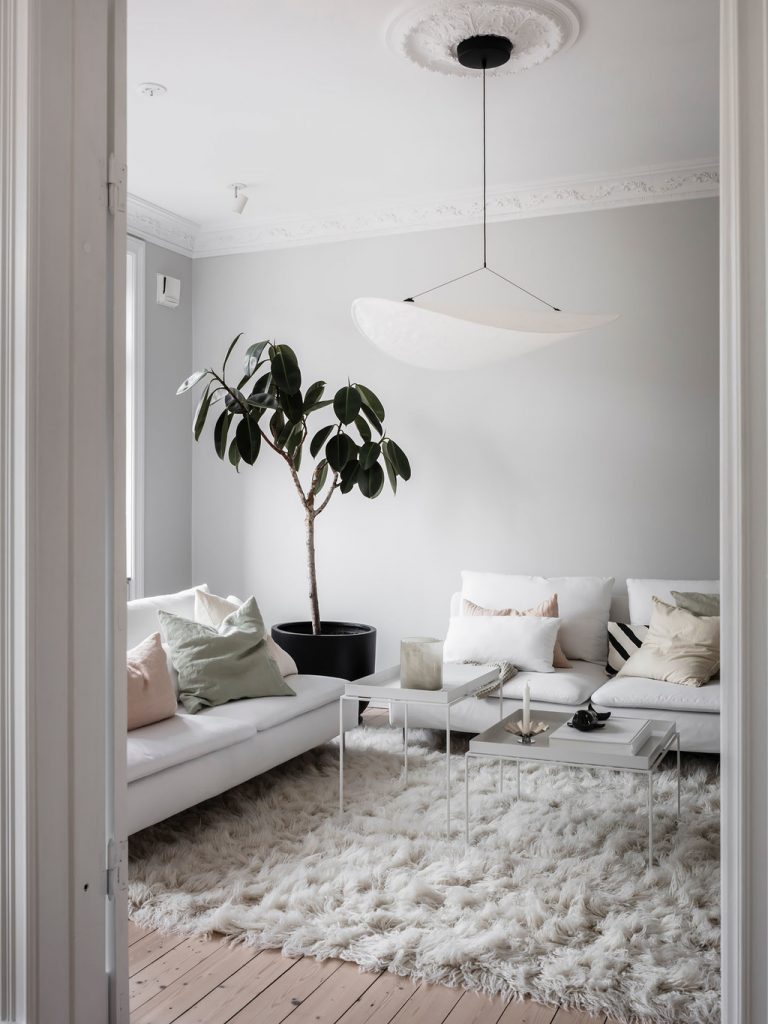Spaces that Inspire: How Minimalist Design Contributes to a Purposeful Life

Understanding Minimalist Design
In an age where distractions are abundant and time is a precious commodity, the allure of a purposeful life resonates deeply with many of us. Minimalist design has emerged as a compelling solution, transforming not just our living spaces, but also our mental states. By emphasizing simplicity, this design philosophy urges us to consider what elements are truly necessary in our environments, leading to less clutter and more freedom.
The Attributes of Minimalism
At the heart of minimalist design are several key attributes, each contributing to the larger picture of how this approach can enhance our lives.
- Clarity: In a minimalist space, the absence of excessive decorations and furnishings fosters an atmosphere of clarity. For example, a room filled with only essential furniture can make daily tasks feel less overwhelming, enabling individuals to focus better on their work or leisure activities. Studies have shown that environments with fewer visual stimuli can enhance cognitive function, allowing for deeper concentration and creativity.
- Functionality: Minimalism prioritizes functionality over frivolity. Every object should have a defined purpose. Consider kitchen gadgets that serve multiple functions, reducing the need for large, single-purpose appliances. This not only saves space but also encourages more efficient use of the area, which is especially beneficial in compact urban homes.
- Calmness: A minimalist approach cultivates a sense of tranquility. Neutral color palettes, open spaces, and natural light can significantly lower stress levels. For instance, a well-designed minimalist bedroom can promote better sleep by eliminating distractions and creating a serene sanctuary.
Impacts on Daily Life
A minimalist environment does more than just look good; it profoundly affects our daily experiences. For instance, research has shown that creative individuals often thrive in uncluttered spaces, where their minds can wander freely without the weight of excess. Moreover, environments crafted with intentionality—like an office designed for focus and collaboration—can inspire employees to foster deeper connections and, ultimately, improve productivity.
As we continue to explore spaces that inspire, we will unearth examples ranging from thoughtfully designed homes to efficient workspaces that elevate our daily experiences. Whether it’s a serene living room with minimal furnishings or a sleek, organized desk, these environments not only influence how we act but also how we feel about our lives and our capacity for fulfillment. Minimalism is not merely a trend; it is a thoughtful approach to curating our spaces, reminding us that often, less is indeed more.
DISCOVER MORE: Click here to delve into the importance of digital simplicity

Creating Inspiring Spaces through Minimalism
Minimalist design invites us to rethink our environments and encourages a focus on the essentials. When we strip away excess decoration and clutter, we create spaces that not only look aesthetically pleasing but also foster a sense of purpose and clarity. A well-executed minimalist design increases the overall quality of life, promoting a lifestyle that values intention over materialism.
Embracing Nature in Design
One of the core tenets of minimalist design is the integration of natural elements. Nature has an inherent ability to nurture our spirit and foster peace. Biophilic design, which connects indoor spaces with nature, is increasingly popular within minimalism. Incorporating large windows to invite bright sunlight, using natural materials like wood and stone, and including indoor plants can transform a space into a sanctuary. This connection with the natural world not only enhances the beauty of our surroundings but can also evoke feelings of tranquility and mindfulness. Research indicates that spending time in nature can significantly lower stress levels and improve overall mental well-being.
A Reduction in Decision Fatigue
Minimalist environments can lead to a remarkable reduction in what psychologists term “decision fatigue,” a mental state that occurs when we are faced with too many choices. In a clutter-free space, where everything has a clear purpose, individuals can navigate their daily activities with greater ease. For instance, a simple wardrobe made up of versatile clothing items allows for quicker decisions in the morning, reducing stress on the mind. This streamlining extends beyond personal spaces; workplaces designed with minimalist principles can facilitate quicker and more efficient collaboration among teams.
- Simplified Living: Many who adopt minimalist design report increased satisfaction in everyday life. When their surroundings are organized, they are better able to appreciate the moments that matter.
- Intentionality: Minimalist design encourages intentionality in choosing what to keep in our spaces. Each item becomes a reflection of who we are and what we value.
- Enhanced Creativity: Uncluttered environments can spark creativity by allowing the mind to roam and explore new ideas without the distraction of overwhelming stimuli.
The Ripple Effects of Minimalism
The choice to embrace minimalist design does not end at personal spaces; it extends to our daily routines and interactions. By creating environments that promote focus and calmness, individuals can engage more meaningfully with their work, relationships, and personal interests. A beautifully organized home office can lead to greater productivity, while a serene and clutter-free living room can enhance family bonding time. Ultimately, minimalist design aligns with the pursuit of a purposeful life, offering a path to a more focused, intentional existence.
As we delve deeper into the concept of spaces that inspire, we’ll explore how minimalist design principles can be applied in various settings—from our homes and workplaces to public spaces that uplift our community spirits. The idea is not just about removing clutter but about fostering environments that inspire and motivate us to live our best lives.
Understanding the Context of Minimalist Design
Minimalist design embodies the principle of “less is more,” where simplicity not only enhances aesthetics but also fosters a clearer mindset. This artistic approach encourages individuals to focus on what truly matters by stripping away distractions. The philosophy resonates deeply with our fast-paced lifestyles, reminding us of the significance of intentional living. Spaces designed with minimalism evoke feelings of calmness and clarity, helping occupants to cultivate a more purposeful life.
The Psychology Behind Minimalism
The psychological impact of minimalist environments is profound. Research suggests that cluttered spaces can lead to increased stress and anxiety. In contrast, minimalist designs promote mental well-being by providing a tranquil retreat that facilitates mindfulness and creativity. The simplicity of these spaces allows for better concentration and improved productivity as distractions are minimized. Incorporating natural elements, such as plants or light tones, further enhances positivity and emotional health, creating a sanctuary that inspires and rejuvenates.
Creating Functional Spaces
An essential aspect of minimalist design is functionality. Each piece of furniture and decor serves a purpose, contributing to the overall utility of the space. For example, multifunctional furniture can optimize small areas, making them more livable while avoiding chaos. This intentional selection of items encourages mindful consumption and sustainability, aligning with the principles of a more conscious lifestyle. By investing in quality over quantity, individuals can foster a sense of ownership and attachment to their spaces.
Minimalism in Different Contexts
Minimalist design transcends various environments, whether in homes, offices, or public spaces. Each area can embrace minimalist principles to create inspiring atmospheres tailored to their intended use. For instance, open-plan layouts reduce barriers in workspaces, promoting collaboration and innovation. In residential spaces, minimalist designs encourage families to gather and connect meaningfully. By incorporating these principles in diverse contexts, we can transform our surroundings into reflections of our values and aspirations.
The Connection Between Minimalism and Purposeful Living
Minimalist design and purposeful living are inherently intertwined. By surrounding ourselves with only what we truly cherish, we cultivate a deeper connection to our possessions, relationships, and activities. This intentional approach to life manifests in clarity of thought, improved focus, and a heightened sense of fulfillment. Ultimately, embracing minimalism challenges us to redefine happiness and success, leading to a more meaningful existence that resonates with our core values.
| Category | Description |
|---|---|
| Reduced Clutter | Minimizing belongings leads to enhanced mental clarity and peace. |
| Enhanced Focus | A simple environment fosters deeper concentration and greater productivity. |
| Intentional Living | Choosing quality items encourages a lifestyle rooted in mindfulness and sustainability. |
DIVE DEEPER: Click here to uncover minimalist techniques for better time management
Transforming Workspaces with Minimalism
The office environment is often where the chaos of modern life manifests most vividly. Cubicles overflowing with paperwork, distracting decor, and cluttered desks can hinder creativity and productivity. By applying minimalist design principles to workspaces, businesses can cultivate environments that inspire innovation and collaboration among employees. This design approach encourages clean lines and open spaces, making it easier for team members to communicate freely and share ideas.
Designing for Productivity
One practical application of minimalist design in the workplace is the concept of agile workspaces. These adaptable environments feature modular furniture that can be rearranged according to changing needs, allowing for both collaboration and focused work. Studies have shown that open, minimalist layouts can foster spontaneous interactions, leading to creative breakthroughs and a stronger sense of community. In fact, the popularity of coworking spaces among freelancers and entrepreneurs reflects a shift towards environments that promote connection while maintaining simplicity.
The Psychological Benefits of Simplicity
Minimalism also extends beyond aesthetics; it addresses fundamental psychological needs. The notion of cognitive load illustrates how a cluttered environment can overwhelm our mental capacity. Researchers suggest that by simplifying our surroundings, we free up mental resources, enabling us to perform tasks more efficiently. A 2020 study in the journal *Environment and Behavior* found that employees working in minimalist offices reported significantly lower levels of stress and increased job satisfaction. Implementing elements such as neutral color palettes and natural textures offers employees a calming backdrop, promoting focus and reducing anxiety.
- Flexibility in Functionality: Minimalist workspaces often feature multifunctional furniture that adapts to various tasks, creating dynamic environments that inspire both collaboration and individual focus.
- Clear Communication: Enhanced visibility in uncluttered environments encourages more spontaneous discussions and feedback, breaking down barriers that typically stifle innovation.
- Calming Aesthetics: Simple design elements, such as the use of organic shapes and limited decor, help create a visually pleasing workspace that enhances morale and productivity.
Inspiring Public Spaces
Minimalist design principles are equally impactful in public spaces. Parks, libraries, and community centers designed with simplicity in mind can offer residents tranquil areas for relaxation and rejuvenation. For instance, the use of open spaces combined with minimalistic landscaping allows for fluid movement and encourages people to connect with nature. Elements such as benches made from sustainable materials and wide walking paths can transform a busy urban area into a peaceful retreat.
Moreover, public art installations that emphasize minimalism can challenge perceptions and inspire creativity within a community. These spaces, devoid of excess, invite social interaction and engagement, ultimately enriching local culture and community ties. A recent initiative in cities such as Seattle and New York is focused on integrating more minimalistic public designs that enhance usability and environmental responsibility. This shift illustrates an understanding that our shared spaces can profoundly influence our mental health and social connections.
As we further explore the intersection of minimalist design and inspirational spaces, it’s vital to consider how such principles can be woven into our everyday lives, nurturing a sense of purpose and intentionality throughout our environments.
DIVE DEEPER: Click here to learn how simplicity can enhance your daily life</a
Conclusion: Embracing Minimalism for Purposeful Living
The impact of minimalist design on the spaces we inhabit is profound, shaping not only our physical environments but also our emotional and mental well-being. From the serene simplicity of a thoughtfully curated home to the agile functionality of modern workspaces, minimalist principles encourage us to strip away the unnecessary, allowing us to focus on what truly matters. As we have explored, these principles foster creativity, enhance productivity, and cultivate a sense of tranquility that can guide us towards a more intentional and fulfilling life.
Moreover, the applications of minimalism in public spaces remind us of the importance of community and connectedness in our modern lives. Parks, libraries, and other shared environments designed with simplicity not only provide a respite from urban chaos but also serve as platforms for social interaction and cultural exchange. This transformation underscores the idea that our surroundings can significantly influence our mental health and the quality of our social ties.
As we move forward in an increasingly complex world, embracing minimalist design can be a powerful tool for cultivating a purposeful life. By consciously designing our spaces, whether at home, in the workplace, or in our communities, we not only create environments that inspire but also pave the way for clarity, creativity, and meaningful connections. As you navigate your own journey, consider how minimalism can reshape your environment, allowing you to lead a life rich in purpose and inspiration.


